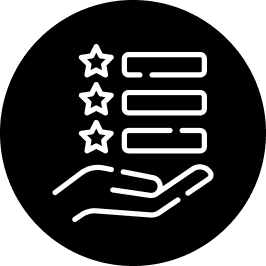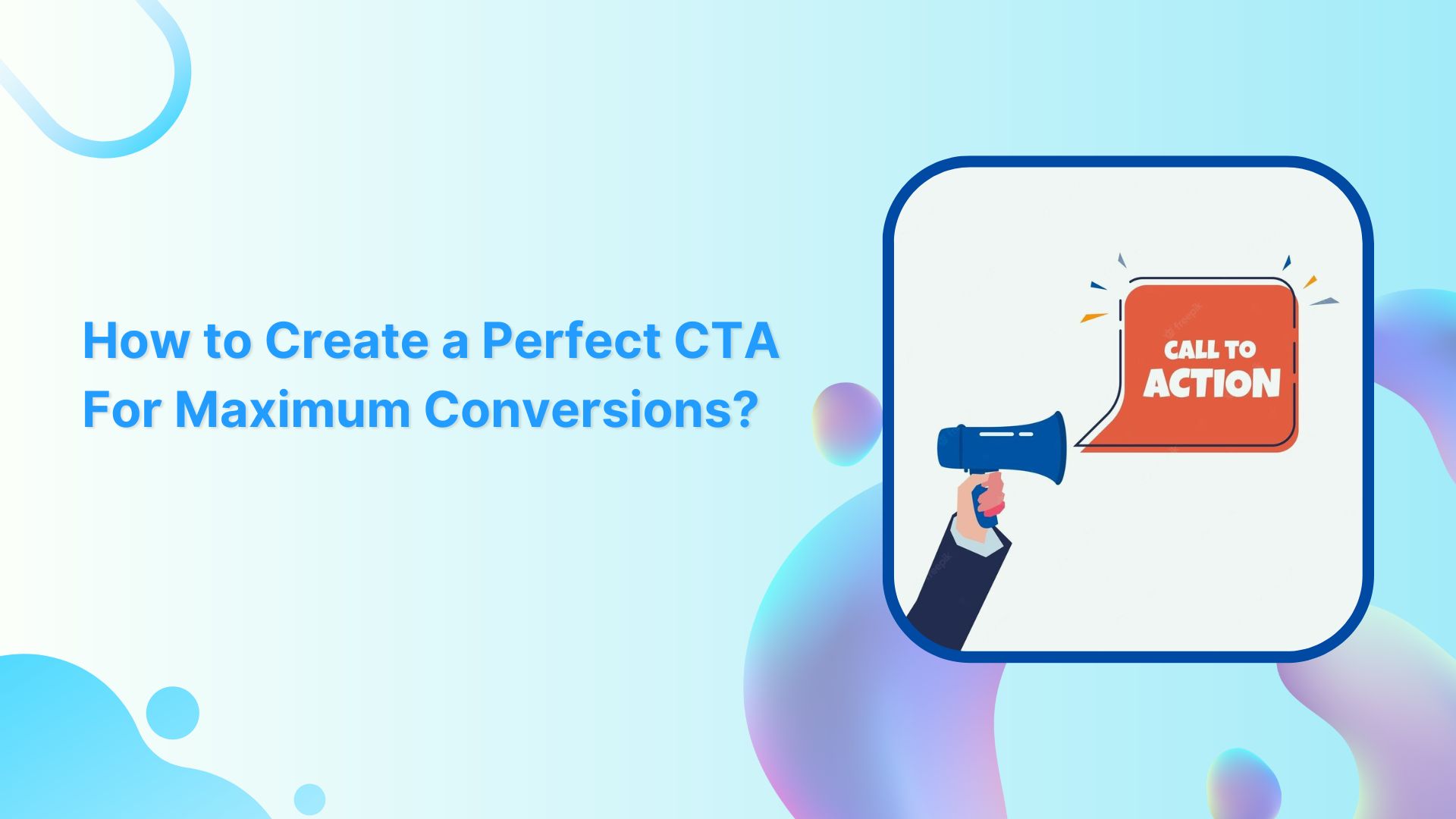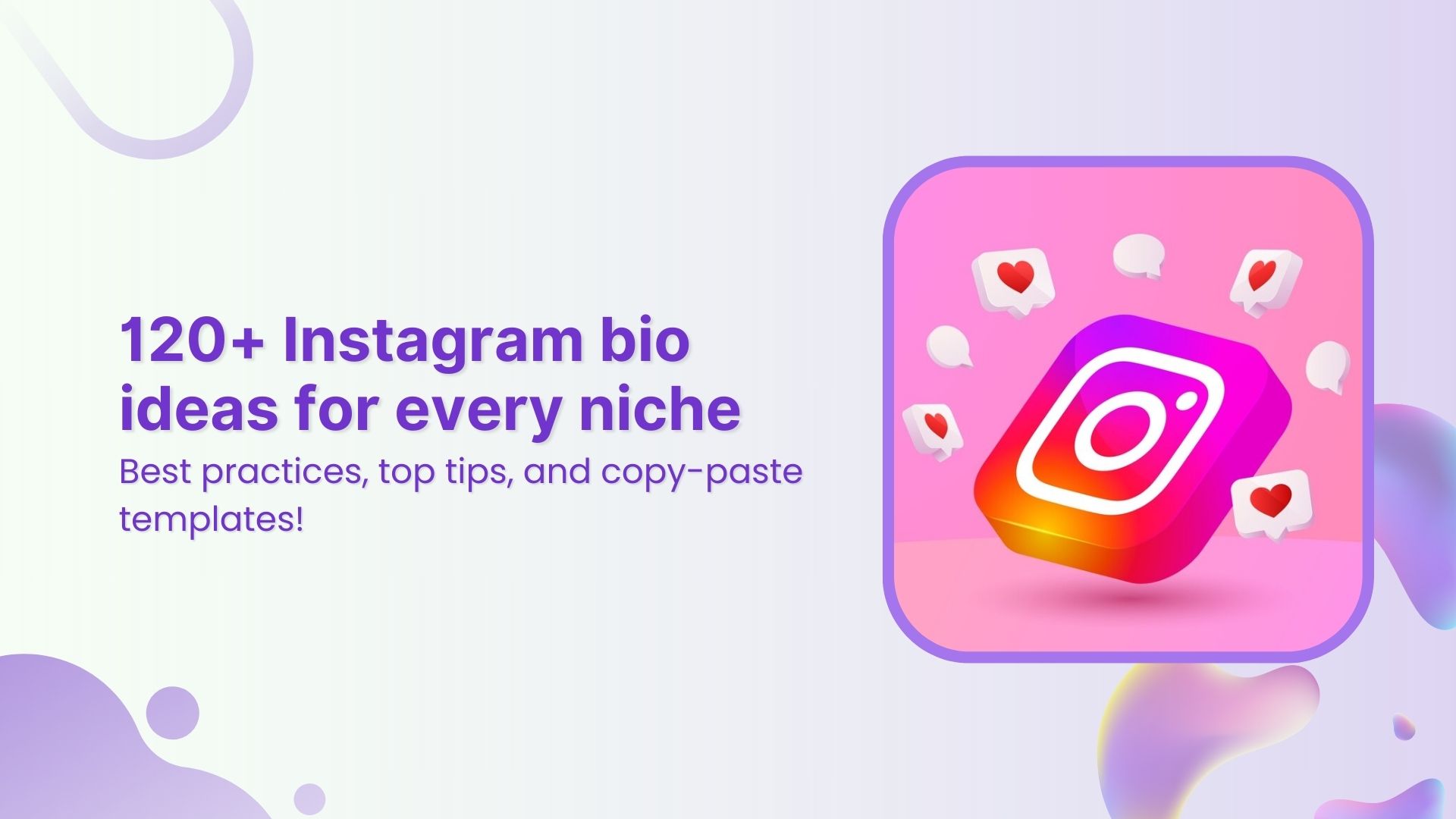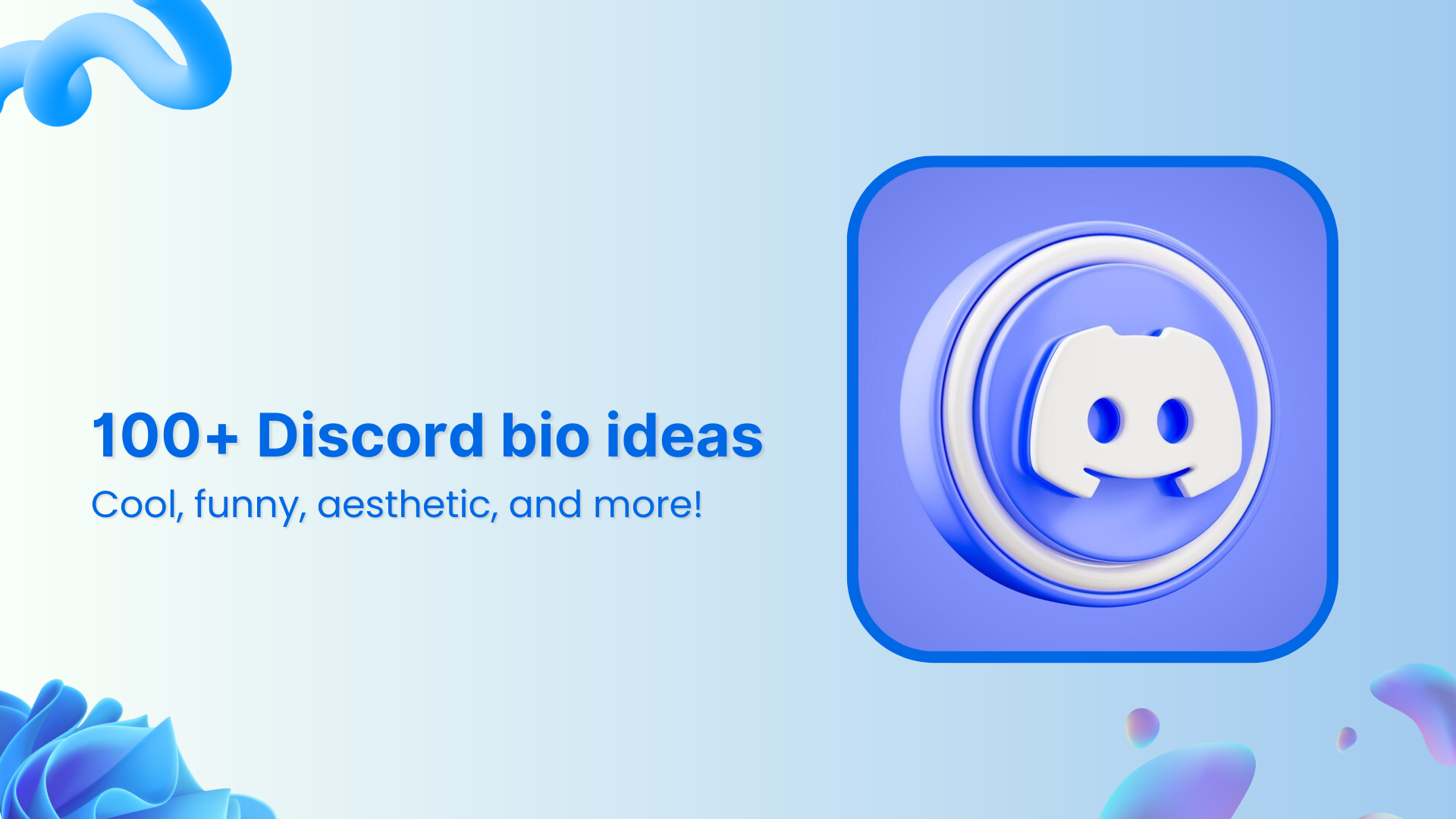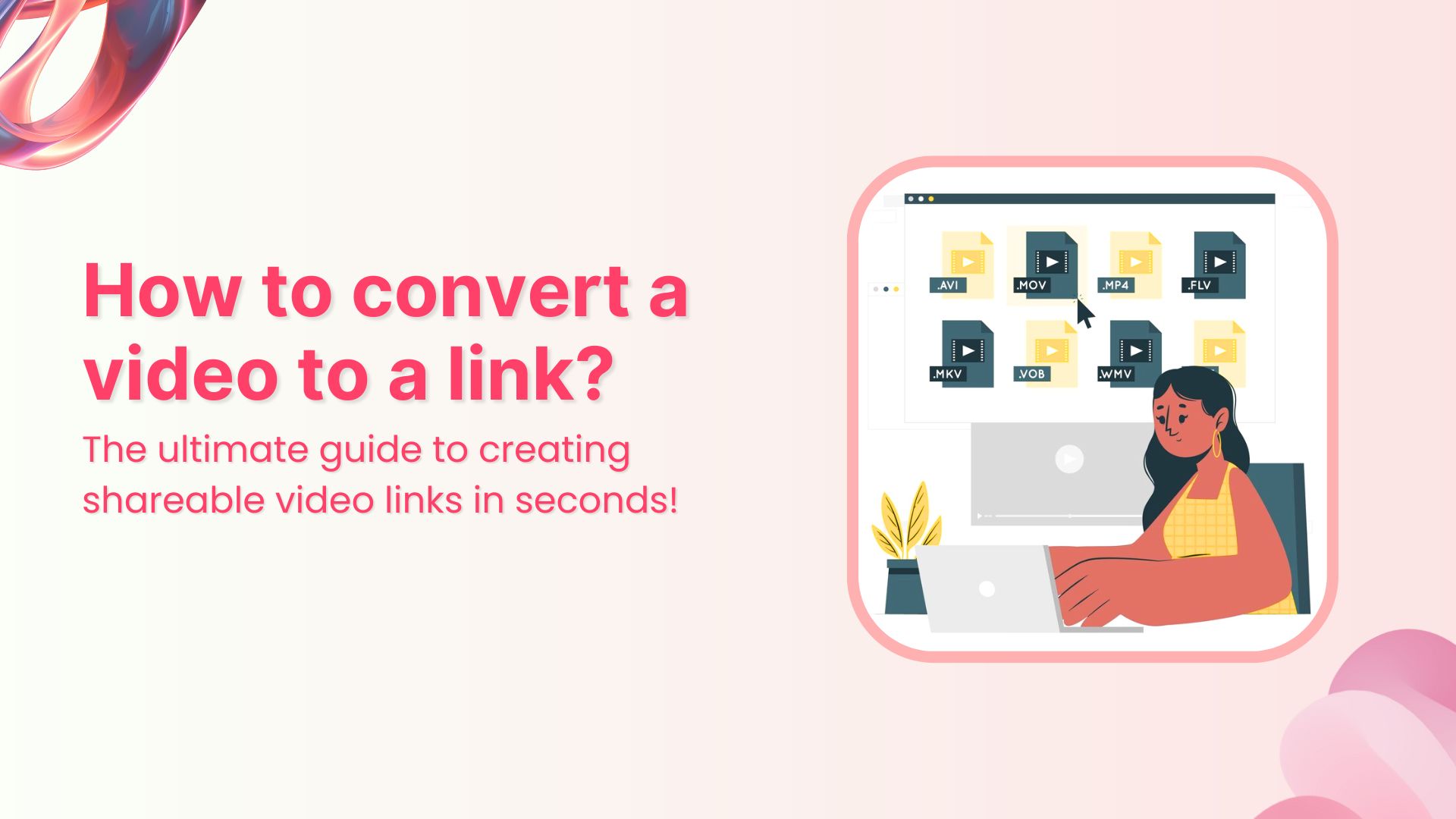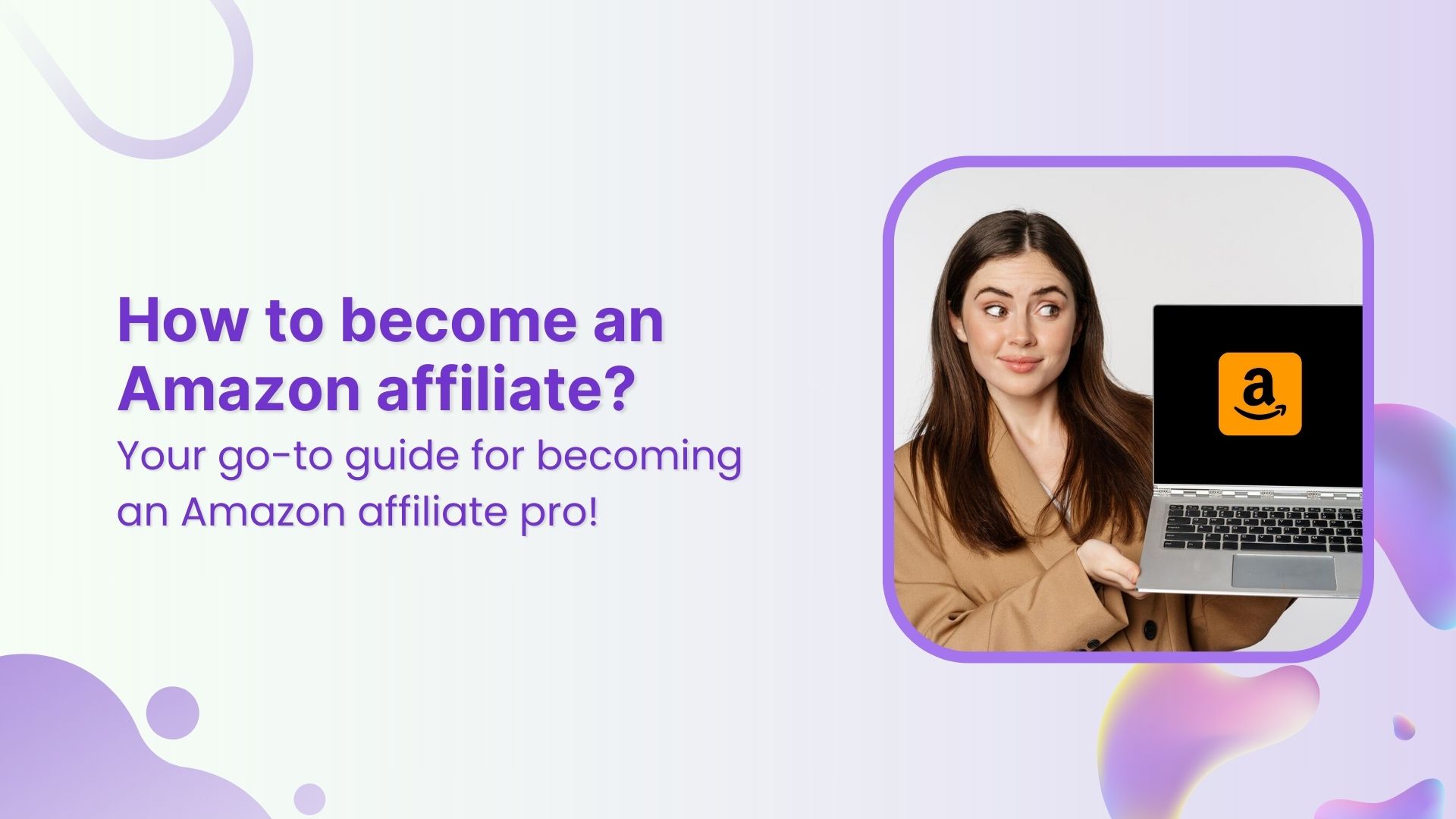In a world brimming with distractions, capturing and holding attention has become an art. Whether you’re a marketer, a business owner, or simply someone aiming to make an impact, mastering the art of the Call-To-Action (CTA) is essential.
A well-designed CTA can transform passive onlookers into active participants, driving conversions and propelling your goals forward. But what does it take to create the perfect call to action that compels, entices, and converts? Join us as we uncover the secrets behind crafting CTAs that leave a lasting impact on your audience.
Get ready to uncover the secret to irresistible attraction and unleash a new era of engagement.
What is a Call-to-Action?
A Call-To-Action (CTA) is a prompt or instruction designed to encourage a specific response or action from the audience. It is typically presented as a clear and concise statement, often accompanied by a visually distinctive button or link.
CTAs are commonly used in marketing and advertising to guide users toward a desired action, such as making a purchase, signing up for a newsletter, downloading a resource, or requesting more information.
The purpose of a CTA is to motivate and engage the audience, driving them to take the next step in their journey, ultimately leading to conversions and achieving specific business goals.
Your website might have won the best website award or could be a slick content source, but your efforts could go futile if your audience fails to understand the workflow. That is why you need to cite your websites with a helpful call to action; to help users progress through your website easily.

Also read: What is a Customer Satisfaction (CSAT) Score? And Why Does It Matter?
How to create a perfect call to action? Explained with the best call-to-action examples:
When it comes to capturing your audience’s attention, design takes the spotlight. As the first element they encounter, it has the power to leave a lasting impression. By choosing the right color palette and crafting compelling words, you can effortlessly sweep your audience off their feet.
Now, let’s delve into the captivating world of CTA design schemes. Discover how you can skillfully play with colors, typography, and layout to create CTAs that not only catch the eye but also drive meaningful engagement.
Psychology of Colors in CTAs:
We all experience and perceive colors differently. The vibe we get from different colors strums the strings of our brains and settles in the subconscious part of our minds.
Researchers found in a study, impact of color on marketing, that 90% of the immediate judgment about a product is greatly affected by its color.
An item that stands out attracts more eyeballs toward itself. The importance of color could be magnified by this example below.
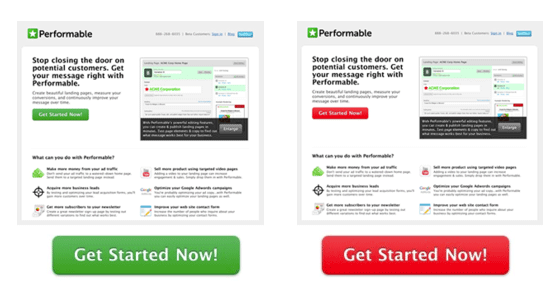
An ordinary alteration like a change in button color can boost conversions.
The boost in conversion was noticed by doing a very ordinary alteration; a change in button color.
The red colored ”Get Started Now” CTA boosted conversions by 21%. Keeping this example in mind, imagine what you can achieve by changing just the color of a button.
There you go; a very simple yet revolutionary tip can turn the tables for you.
Nevertheless, the idea is not to use blazing colors in your CTAs, but the idea is to make the CTA stand out from the background.
In this example, the page is constructed on a green palette. A green-colored CTA simply blends in with the background and doesn’t pinch the viewer that much. Whereas, the contrast of the bright-colored CTA button adds to its captivating.
Also read: How to automatically shorten URLs in an RSS Feed
Inspiring example from Shopify CTA story:
Let’s see how Shopify grabs your attention with its CTAs. The current call to action they use on their website looks like this:

But before this, during the past few years, they had been constantly trying to improve the look of their CTA. In 2013, they advertised these versions of CTA ads.

The predominant version of their CTA till 2016 was

You can also get the maximum lead by playing with your CTAs and improving their outlook.
Use smart wordplay in your CTA:
Overlooking your website’s call to action is synonymous with wasting hours of effort spent on creating one. Be it the colors or the text of your CTA, it should be well thought out.
Don’t use mainstream CTA words such as ”Buy Now”, ”Download” or ”Click This”. Such boring words could destroy your conversions. Instead, use the words that go best with the idea of your product.
Because you don’t want your users to think that you are a brain-fed robot prone to go with worn convention.
Choose the words wisely!
Let’s see this example:
Let’s take an example of this case study; changing one word in the call-to-action of the B2B website generated a 38.26% lift in conversions.
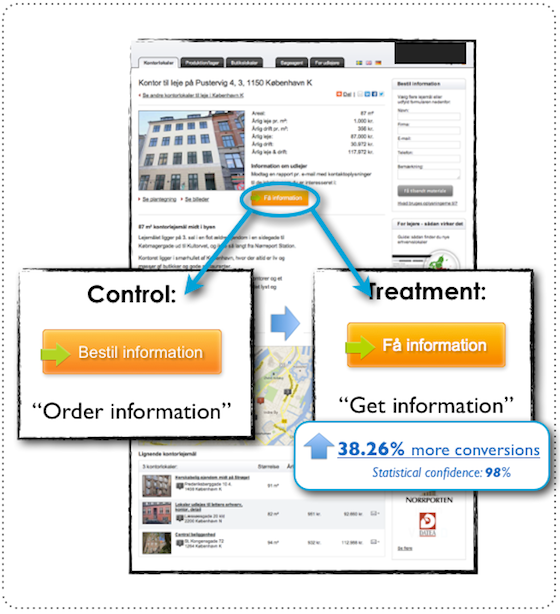
Here the weighted value of the words “Order” and ”Get” can be measured.
Apparently, both these words are used to nudge the user to click on the CTA to buy your product. But take a look at the psychological effect these words have.
The word Order indicates what the user has to do- no anticipation for the end result is built for the user.
Conversely, the word Get emphasizes the end result- what the user is going to get if they click on the button.
And just like the colors of your CTA, your text has to be discrete too.
There is a fine line between being unique and being extra. However, don’t lose your originality at the verge of being unique.
The secret is to resonate with your product. Let’s take an example of WordPress and how they’ve shaped their CTA.
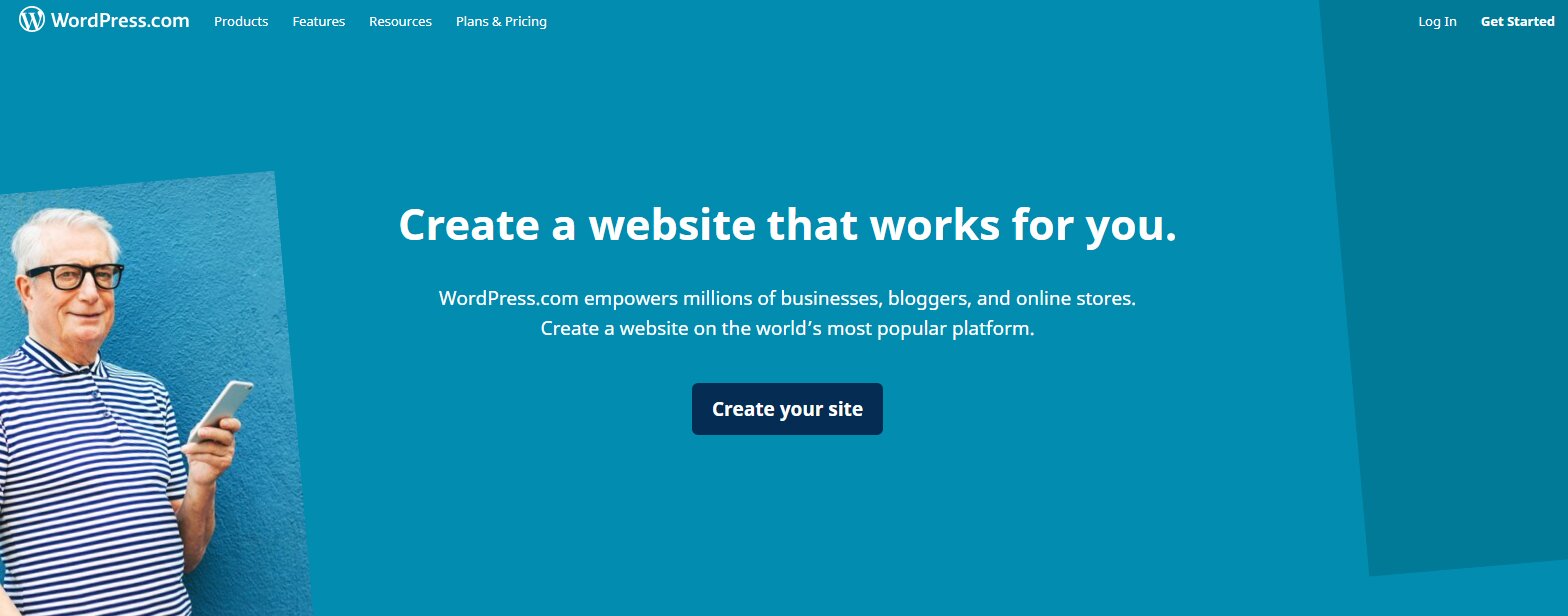
“Create a website that works for you.”
You can observe that the text of the CTA goes seamlessly with the story of the website.
So, spend some time associating your CTA with your business story.
What is a business story?; you must ask.
Let me spell it out for you.
Use the power of storytelling:
Have you ever heard about neural coupling?
It is a phenomenon that illuminates the storyteller’s and the listener’s brains in the same areas.
You must have witnessed unwitting attention when you start listening to a story.
A story is the compilation of events in such a manner that it reverberates maximally with our neural cells. In easier words, we ought to remember information in the form of a story much easier than plain facts.
When you are writing the text in your CTAs, the wording needs to complement the story’s rhythm. Let the readers feel the emotions and make them empathize with your concepts.
Tommy Walker states in a blog that the purpose of the CTA is to build anticipation. The effective CTA is not created by smart wordplay, it is insurance to the reader that your story gets better when they sign up.
Let’s take a look at the example of Movement Mortgage:
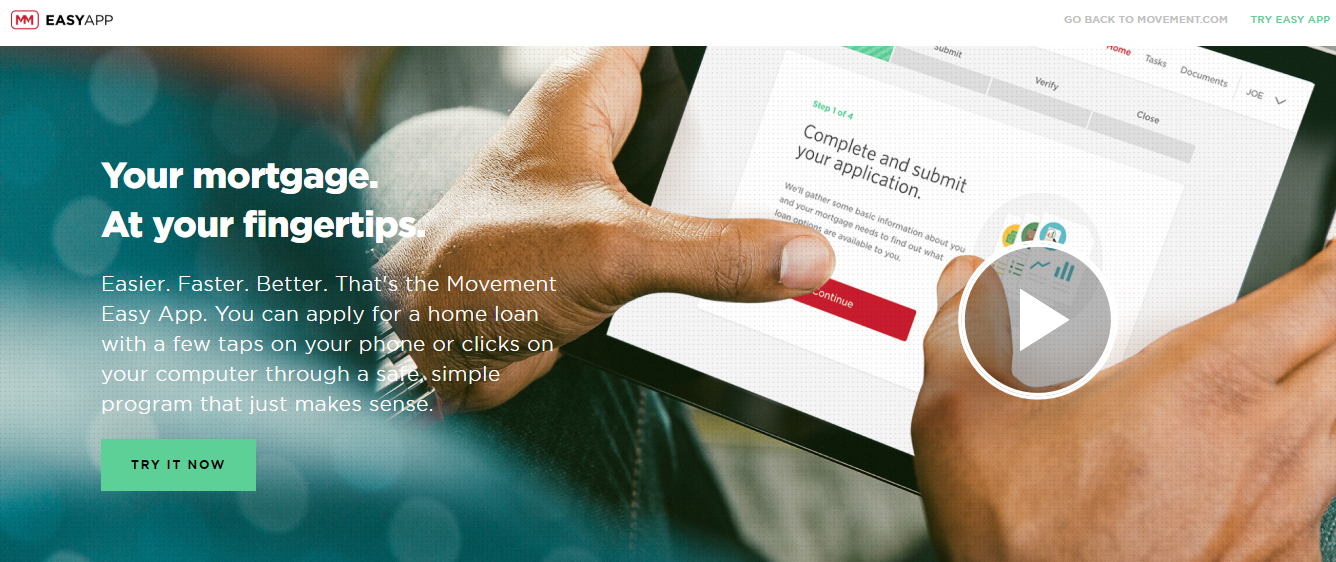
Their concise CTA “Your Mortgage At your fingertips” is appealing enough for the user to click on the “Try it now” button.
The information they’ve provided on their landing page is neither insufficient nor overwhelming.
Also read: How to Insert Links in YouTube Descriptions: Step-by-Step
Create a sense of urgency:
Fear and love are the two powerful forces that drive mountains. Love is difficult to understand, so let’s use fear in our marketing strategies.
Sometimes, you have to use alarming words in your call to action to sell your deal. Instead, use words that create urgency and enchant the viewer to click on them.
If you succeed in making your users believe that they’ll miss out on the hot deals if they don’t click on the CTA. The fear of missing out will push the users to check out the deal before the time runs out.

Also read: Call To Action For Social Media : 15 Best Examples
Less is more:
Keep things simple and unambiguous.
Simplicity brings out elegance, and elegance is attractive.
If you can explain something while keeping it simple, why go down the hard path?
Simplicity could be used to sprout curiosity in the viewer’s mind which elicits them to explore more of your offerings.
Unamo, a tool for marketers, sets a live illustration of simplicity.
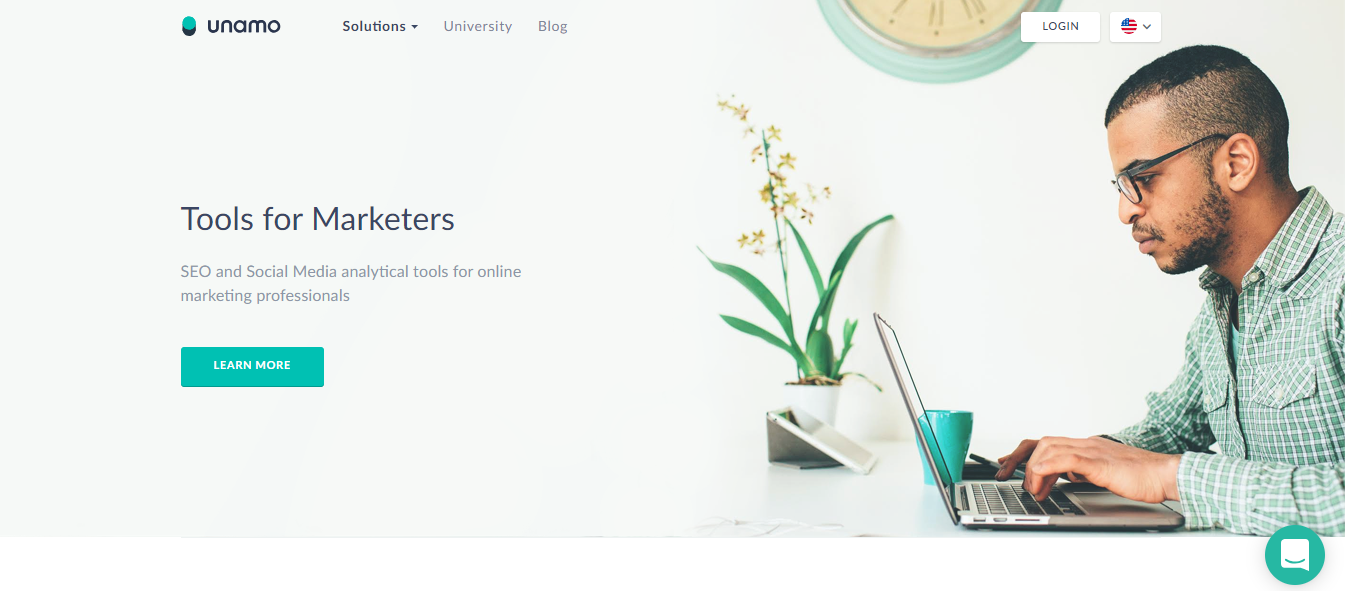
You can see in the screenshot that the words used on their landing page are quantifiable and ignite questions in the reader’s mind. And, to unveil the details, the users are invited to learn more via a call to action.
Be direct:
If you own a renowned brand, you don’t need to splash unnecessary information on your website. People already know you and your specialties. So be direct, swab away all the explanations, and directly introduce your user to your offer.
Square, a credit card processing tool, aces the use of CTA by direct targeting. Check out their landing page in the screenshot below.
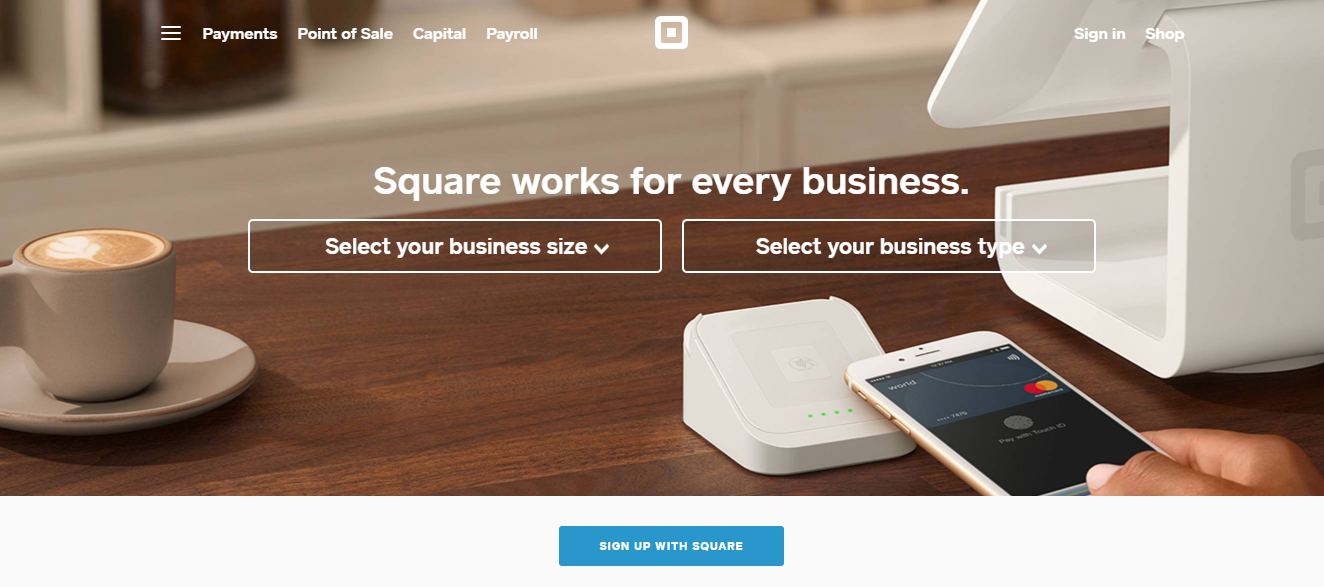
On their website, they have taken advantage of the fact that people are already acquainted with them. Look at how sleekly they have made use of CTAs.
People know their business and visit the website to sign up. And there it is, right in front of their eyes, they don’t have to search for it. The effective targeting and agile placement bring in the exact audience that Square hopes to convert.
Use CTAs According to Your Funnel:
Your audience can be at different stages of their customer journey while coming across your offering. Therefore, the personalization and customization will add more relatability for them, and they are more likely to convert through a specific call to action.
This can be done by customized CTAs according to the type of content, whether it’s awareness level content, consideration level content, or conversion level content. Therefore, Retargeting CTAs can be more specific than awareness campaign CTAs.
For example,
Let’s look at Slack’s case study and how it caters to different audiences through different CTAs on the same page.
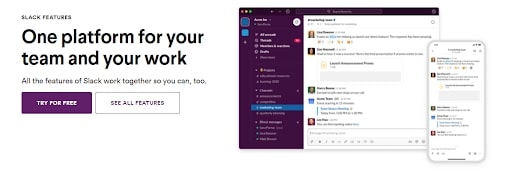
Slack has two CTA buttons on its features page. This page caters to two types of audiences. One who is in the mid of their research stage and is learning and exploring the tool’s features. The second CTA targets people who are in the last stage of their customer journey and want to sign up for the tool.
In addition to these, they also have several other CTAs on their page where they offer you to talk to their sales team for more information and understanding of the offerings. So again, this is a great example of catering to different audiences at different customer journey stages.
Here’s another example:
Nintendo’s website is another example of moving down your audience in the funnel through effective CTAs. They answer the questions of their visitors by answering them through a CTA button. For example, here they have the CTA of “Compare Features”, which enables their customers to research the options.

Having relevant CTAs according to where your visitor is in their customer journey will enable you to drive conversions by maneuvering their journey.
You can now see just how important little CTA tweaks can be.
Also read: What is a Tracking Pixel and How Does it Work?
Create selling content to go with your CTA:
Credibility is one of the core values in the online and offline world for converting our visitors into customers. That’s why you must pair your CTA with the content which adds authenticity to your offerings.
One way is to use testimonials as social proof that your services have been tried and tested by real users. Social proof and reviews from other people make a substantial difference in your customer’s decision-making.
For example,
In this post, Neil Patel Digital used the testimonial of a business owner to share her experience of working with Neil Patel. After this feedback, people are more likely to explore the offerings by clicking on the CTA at the bottom.

Another way to pair your CTAs with selling content is to add numbers and compelling statistics. These statistics also prove your credibility that there is already a high number of people who trust your services, products, or current offering. This also creates a sense of urgency by making people realize that they might be missing something.
For example, Neil Patel uses his organic results on CTAs to attract visitors to attend his webinar. With this copy, people are more likely to explore the tricks and tips to increase their website traffic.
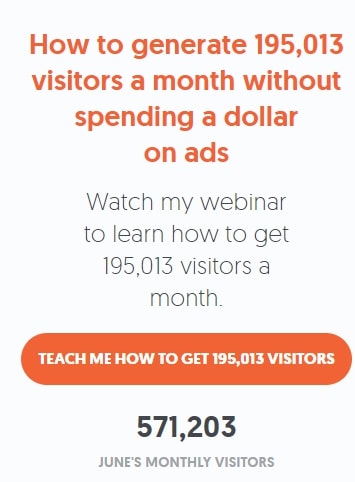
Right contextual placement is crucial:
Using a CTA on your website is essential but its placement is the tricky part.
A well-placed CTA is likely to gain more leads than a misplaced CTA which is not backed up by a powerful story.
Don’t we all crave harmony in our lives?
Just like that, you as a marketer should harmonize all your call to action on your website. Create a story on your website and make the end-user a part of your selling story.
A logical story will create momentum in the user’s brain to figure out your product’s value.
To make sense to the user, everything has to be in context.
Let’s say you have a website and your motto is to promote your product. After highlighting one of your key features, invite the user to try out that feature via a CTA right below the description. This will encourage the user to click on the CTA to substantialize the concept they’ve just learned.
Make the user’s visit worthwhile so that they appreciate the sweet symphony your service provides them.
The relevance of your content with your CTA matters equally as the quality of both, if not more.
If you don’t place your CTAs in the right context, the users will be confused about their next move. Thus, they will get intimidated and bounce off of your website.
Check out how smartly Lynda’s CTAs integrate with the offers they sell.

The CTA is placed right above the offered courses, directing the users to start a free trial right away. The point to notice here is that had the CTA been present elsewhere, it would have been cumbersome for the seeker to find the CTA to move forward.
Another perspective explains that for complex websites, it’s better for the CTA to reside below the fold. ContentVerve reinforces this statement by providing us with some facts and figures.
So, according to their study, CTAs placed at the bottom of complex products and service websites gained 304% more conversion than if the same CTA were placed at the top.
This theory is not a game-changer though, as the concept is to stay consistent. If you have a product that needs plenty of description for the viewer to digest, don’t risk skipping the important message.
Remember that the expanse of your CTA is wider than just pixels and colors. It’s about creating psychical chemistry with the onlooker.
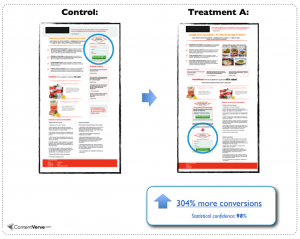
Customer feedback:
At this point, you pretty much are on the expert ladder to incentivize your CTAs.
The next thing to take care of; is customer feedback and customer satisfaction score. Your website should be understandable by a wider audience and elucidate their cognitive curiosities.
Even if you have created a classic CTA for your website that withstands all the rules, you still have to rely on the end user. Because an impartial user attains an unbiased experience of your website.
Value the feedback of your customers. Make sure that your users understand the workflow of your website properly. Revise and upgrade your design to the extent that your website becomes a piece of cake for the coming traffic.
How to use CTAs in a Blog:
A Call-To-Action may defer in its guise, but the essence remains the same; i.e. to lead the visitor toward their next step.
Above are some examples of CTAs being used in the home website to guide the visitor toward their next move.
CTAs could also be used for brand marketing as well. The use of such CTAs could easily be staged in a blog.
For example, if you’re explaining a new feature in your blog or creating relevancy with your product, you could escort the user toward the landing page of your home website via a powerful CTA. This could be done on different channels.
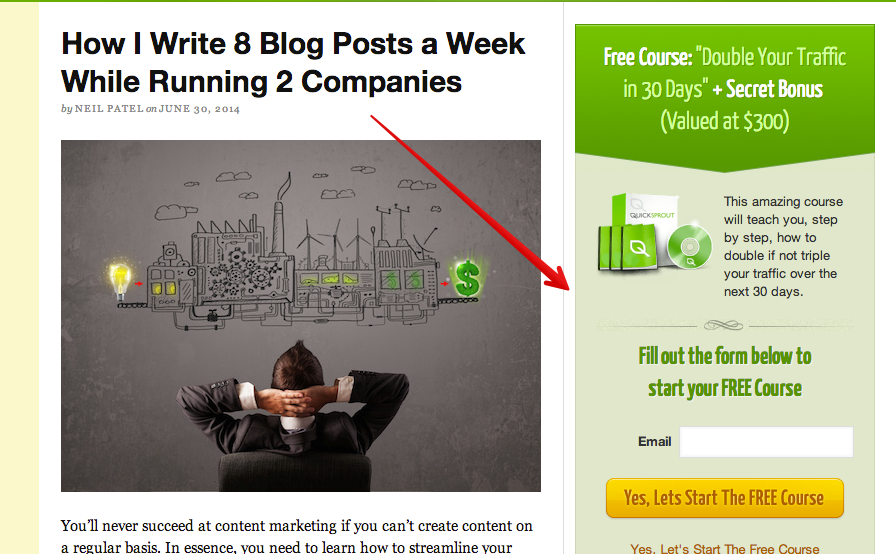
Voila!
You can generate leads even when the audience is not present on your website. But how do you do it?
Replug has the answer to this question.
How does Replug help you create a perfect CTA?
Replug is a powerful tool that allows you to easily create and customize calls-to-action (CTA) on your website. With its user-friendly interface, you can quickly design CTAs that match your brand’s style and aesthetic by adding colors, fonts, and other design elements.
Replug also comes with analytics features that allow you to track the performance of your CTAs and conduct A/B testing to determine which versions are most effective. This means you can optimize your CTA for a better conversion rate and increase your website’s performance.
Create compelling Call-to-Actions to boost conversions
Improve your click through rate by creating catchy CTAs for your marketing campaigns.
Get Started For Free!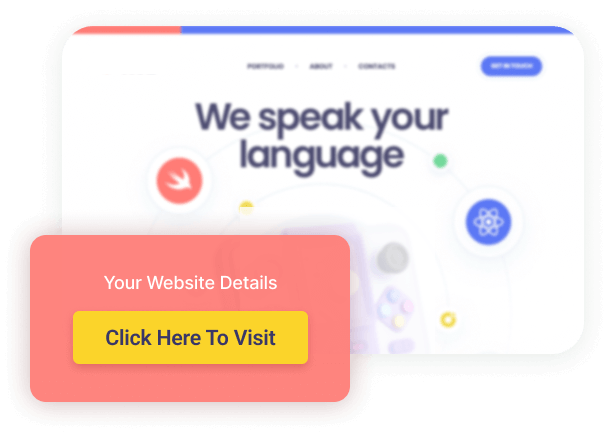
Replug provides a complete canvas for you to draw a catchy call to action from scratch. In addition, the intuitive design of the website lets you smoothly progress through the whole process.
Try Replug for free and envisage your business venture by creating a powerful call to action for your business.
Maximize the Performance of Your Call-to-Action (CTA) with Replug Analysis:
Unlock the potential of your call-to-action (CTA) using Replug’s powerful analytics. Gain valuable insights into the effectiveness of your CTA by tracking and measuring key metrics. Replug provides comprehensive data on:
- Click-through rate (CTR): Measure the number of clicks your CTA receives. A high CTR indicates an engaging CTA that prompts users to take action.
- Conversion rate: Evaluate the success of your CTA in driving desired actions, such as purchases or sign-ups. A high conversion rate signifies an effective CTA leading users to conversion.
- Bounce rate: Understand how many visitors leave your page after viewing a CTA. A high bounce rate suggests the need for a more relevant and compelling CTA to retain user interest.
- Time on page: Assess the amount of time users spend on a page with your CTA. A low time on a page could indicate the need for a more engaging CTA or additional information to captivate users.
- A/B testing: Compare two versions of your CTA (A and B) to determine which performs better. Replug enables you to measure and compare metrics, identifying the most effective CTA for driving conversions.
To effectively gauge CTA performance, define clear goals, understand your target audience, and tailor your CTA accordingly. With Replug’s insights, optimize your CTAs for maximum impact and drive superior results.
Conclusion:
Discard the conventional rulings and design intuitive, more compelling CTAs for your audience.
Get them hooked on your products and services by resonating with their cognitive needs. Make your CTAs stand out by choosing smart color schemes for your CTAs. Create a story for your customers to make their exploration of your website purposeful.
The placement of the CTA is as important as its design. Carefully contextualize your CTA’s placement and make your users’ journey a seamless one.
Create benefit-oriented CTAs for your websites and multiply your conversion rate and lead generation.
A well-placed and well-designed call to action is not to be undervalued as it can stretch your business capacity to many folds.
FAQs
Why is a strong CTA important?
A strong CTA is important for user engagement and improving conversion rates.
How can I optimize my CTA for better visibility?
Optimize your CTA by using clear language, visual prominence, strategic placement, urgency, and testing.
Can I include multiple CTAs?
Multiple CTAs can confuse users; focus on a primary CTA with secondary options if necessary.
How can I track the performance of my CTAs?
Track CTA performance using analytics tools, and monitor click-through and conversion rates.
You may also like:
How to Fix the “Instagram Bio Links Not Working” Issue?
What Is a TikTok Pixel & Learn How to Set It Up?
How to Create Tiny URL: Step-by-Step Guide



















